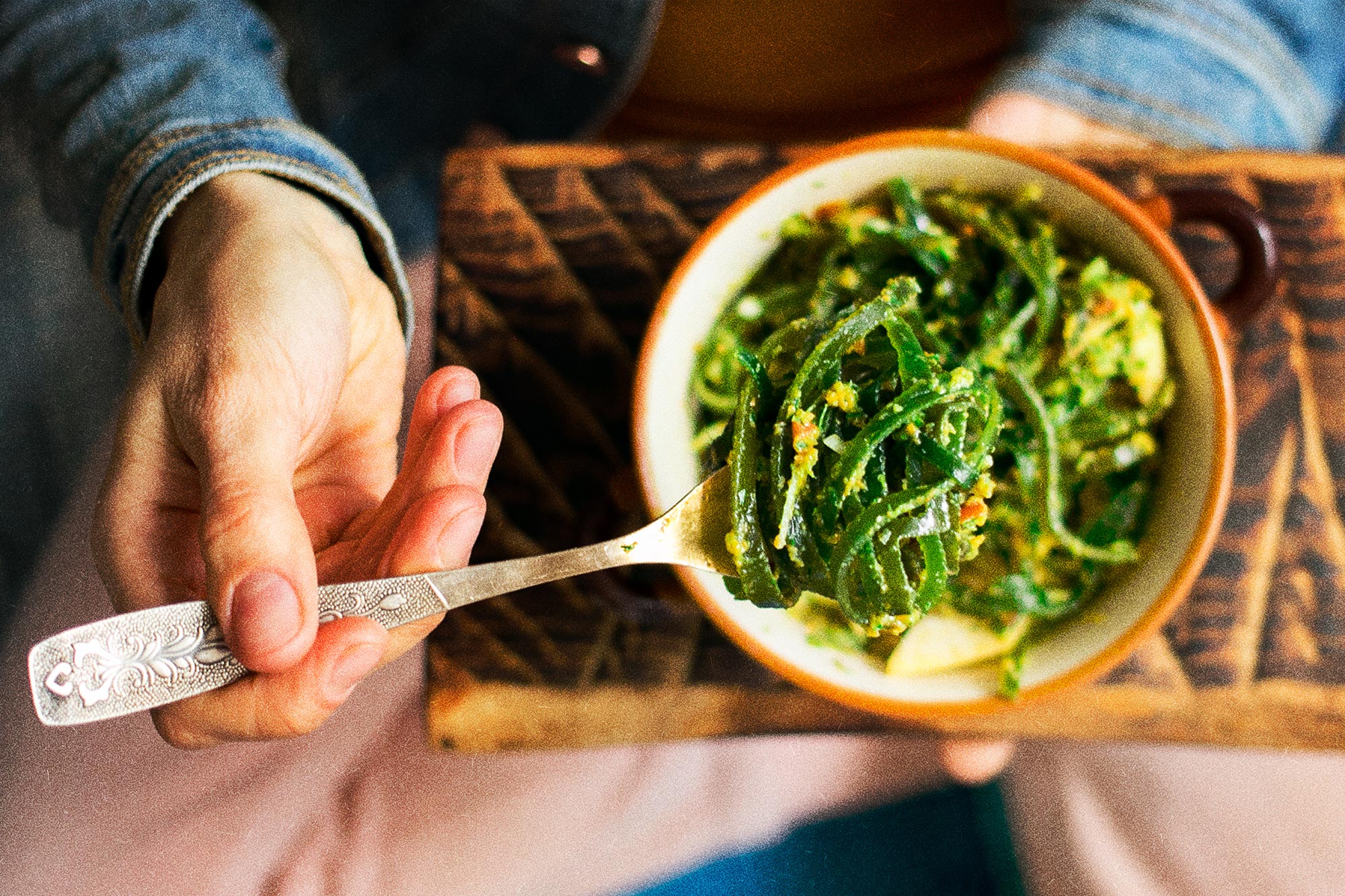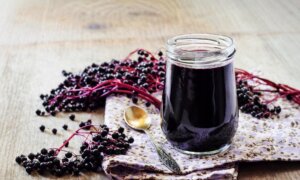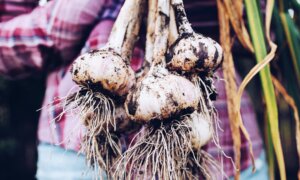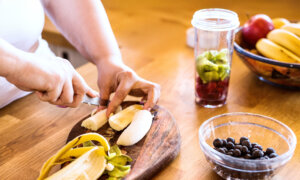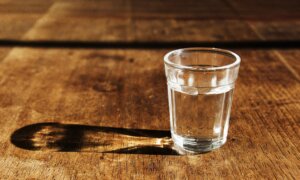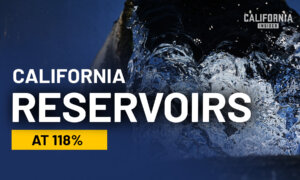The slippery and slimy nature of sea vegetables, including their green, reddish, or brown colors and fishy smell, makes them seem alien to many of us. Nevertheless, seaweed comes with a variety of health benefits worth exploring.
Introducing Sea Vegetables
Edible sea vegetables are also called macroalgae. They may seem like underwater plants but have fundamentally different structures. They are comparatively simple and lack the much more complex and diverse tissue of plants, such as stems, flowers, leaves, and bark.
Up to 30,000 varieties of sea vegetables exist around the world, according to scientists—each with a unique look, flavor, growing season, and nutritional value.
Sea vegetables are categorized into three taxonomic groups largely defined by their coloring. Long chains of carbohydrate molecules called polysaccharides determine the difference and give each macroalgae its unique character.

(Plateresca/Shutterstock)
Brown seaweeds have alginates and fucoidans as their main polysaccharides. Those in red seaweeds are called agar and carrageenan, and ulvan is mainly seen in green seaweeds.
The food industry uses some of these sugary compounds as gelling and thickening agents. Others find applications in the pharmaceutical or cosmetic industry as wound healing ingredients or emulsifiers.
Except for alginate, all the polysaccharides found in macroalgae are sulfated, meaning that the complex groups of sugars are negatively charged. This gives them added health benefits, such as anticoagulant and anti-thrombotic properties, as well as anti-inflammatory, anticancer, and antioxidant effects.
Comparing Macroalgae With Microalgae
Certain types of sea vegetables (macroalgae) grow their leaves up to 65 yards. Others are only a few millimeters long, but all are multicellular organisms that grow in marine environments and can be seen with the naked eye.
Microalgae are unicellular, microscopic plants that mostly grow in freshwater. The best-known varieties—spirulina and chlorella—are examples of these well-marketed species, which often come conveniently packaged in capsules for easy dietary supplementation.
Edible seaweed harvested sustainably from our oceans is still less common on people’s dinner plates. However, that mindset might shift after learning about the abundance of healthful bioactive substances that could help solve many of our nutritional deficiency problems.
Seaweed’s Health Benefits
Sea vegetables can provide alternative sources of iodine, support gut health, positively influence blood sugar levels and cholesterol, and aid the cardiovascular system.
Let’s dive into what makes macroalgae so valuable for our health.
Alternative Source of Iodine
“Some people eat sea vegetables to ensure adequate iodine intake from a non-industrial, natural source. Seaweed is high in iodine and seaweed iodine is readily absorbed by humans,” Steve Eddy, a science adviser with Maine Coast Sea Vegetables, Inc., told The Epoch Times in an email.

Steve Eddy, a science adviser with Maine Coast Sea Vegetables, Inc. (Courtesy of Steve Eddy)
The organization Seafood Watch states on its website that kombu, a kelp native to Japan, “has an astonishing 9333 percent Daily Value of iodine, 13 percent Daily Value of magnesium, and 14 percent Daily Value of potassium per serving (7 grams dried seaweed).”
With 7 grams per serving, dried nori still provides a daily value of 98 percent of iodine. Wakame (brown kelp) has a daily value of 75 percent.
The thyroid gland uses iodine as an essential trace element to produce thyroid hormones. In turn, these hormones regulate major functions in our bodies, such as growth, development, and metabolism.
However, consumers should be aware that both iodine deficiency and iodine excess can have health implications.
If people take high doses of iodine over a longer period, iodine toxicity can occur. Symptoms can include a fever, gastrointestinal issues, or skin irritations, as well as cardiovascular and nervous system ailments.
The National Institute of Health recommends a dietary allowance of 150 micrograms of iodine for adults, slightly higher for women during pregnancy and lactation, and identifies seaweed as one of the best food sources of this essential trace mineral.
Besides iodine, macroalgae are an excellent source of vitamin A, magnesium, iron, and 23 additional essential nutrients important for our body’s health. Eddy noted that sea vegetables are particularly rich in minerals, offering more per gram than many other foods.
Digestive Health
Unlike the carbohydrates found in land-based plants, those in sea vegetables are largely indigestible but have shown promising antimicrobial, anti-inflammatory, and anti-obesity effects in lab studies, Eddy said. Sea vegetables may also serve as prebiotics by encouraging a healthy gut microbiota.
Indeed, prebiotic properties and dietary fiber both promote digestive health.
Whereas the first nourishes the growth of beneficial bacteria in the colon, the latter helps regulate stool consistency, support waste elimination, and speed up transit time.
Brown algae seem to have a special ability to heal the intestinal wall. They also suppress inflammatory cytokines—small proteins that control the growth and activity of immune and blood cells—according to a 2022 review published in the International Journal of Molecular Science.
The far-reaching effects of a smooth digestive tract extend to diet-related conditions. Seaweed can balance glycemic levels and cholesterol, thereby offering support to people with diabetes and hyperglycemia.
Good digestive health aids the absorption of micronutrients and macronutrients and is an essential precursor to cardiovascular health, according to a 2024 review published in Marine Drugs.
Cardiovascular Health
Edible seaweed is laden with vitamin K, which is important for blood clotting and heart health.
Vitamin K is naturally found in two forms, one of which is present as phylloquinone (K1) in macroalgae. The vitamin’s antioxidant abilities and its link to slowing vascular disease have been widely studied in recent years.
Importantly, people taking anticoagulants, particularly those on warfarin (Coumadin), should speak with their physician before eating iodine-rich foods such as seaweed.
Algae can mitigate oxidative stress, which lowers the risk for cardiovascular disease and protects “against the progression of vascular calcification, which is linked to a higher risk of cardiovascular disease,” a 2024 study stated.
Therefore, seaweed can be seen as a functional food in one’s diet to promote heart health.
Cooking With Seaweed
Seraphina Erhart, general manager of Maine Coast Sea Vegetables, Inc., enjoys experimenting with seaweed in the kitchen, whether it’s a warming pot of adzuki beans with Alaria seaweed on cold days or a dulse and avocado grilled cheese or mock tuna salad in the summer.

Seraphina Erhart, general manager of Maine Coast Sea Vegetables, Inc. (Courtesy of Seraphina Erhart)
Adding edible seaweed to one’s diet can be as easy as buying a dried variety at the store and adding it to your cooking. For example, dried kelp flakes fit well into a green smoothie, or dried dulse powder can be used as a salt substitute in stews, salads, or other dishes.
Erhart understands that trying something new can be daunting, so she encourages people to ease into cooking with seaweed by adding it to familiar dishes—treating it like an herb, flavor enhancer, or salt substitute.
Erhart shared one of her favorite recipes: a smoked dulse and avocado grilled cheese sandwich.
Smoked Dulse Avocado Grilled Cheese Sandwich: Recipe
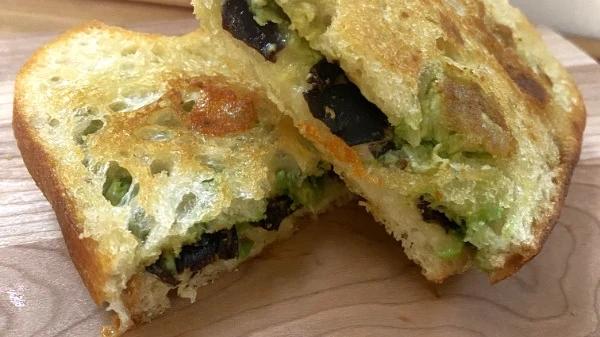
(Courtesy of Maine Coast Sea Vegetables, Inc.)
Ingredients:
- 2 slices of your favorite grilled cheese bread, we like a good multigrain or sourdough
- 1 tablespoon of butter
- Cheese to taste—we like a sharp cheese to contrast the flavors, but you may use your favorite cheese filling of choice
- Several slices of avocado
- Applewood smoked dulse (or regular dulse)—pull a few fronds apart to be a single layer and ensure that no tiny shells are hidden
Instructions:
- Butter one side of each slice of bread, then flip the bread over onto a cutting board or some other cleanable surface so that the buttered side is facedown.
- On one slice, lay the cheese evenly across the surface of the bread and then place the dulse on top of the cheese in a thin layer.
- On the second slice of bread, lay or spread the avocado slices evenly across the bread.
- Stack as a sandwich and pan-fry at low temperature for the most melt factor.
- The dulse will soften between the two fats, and it will be easy to eat. Enjoy!
Potential Risks of Eating Seaweed
Some species of seaweed are tainted through environmental factors, such as petroleum residues, pesticides, herbicides, heavy metals, or radioactivity.
Buy seaweed from reliable sources that employ quality control measures—such as testing for heavy metals—to ensure a product is as safe to consumers as it has been for centuries.




